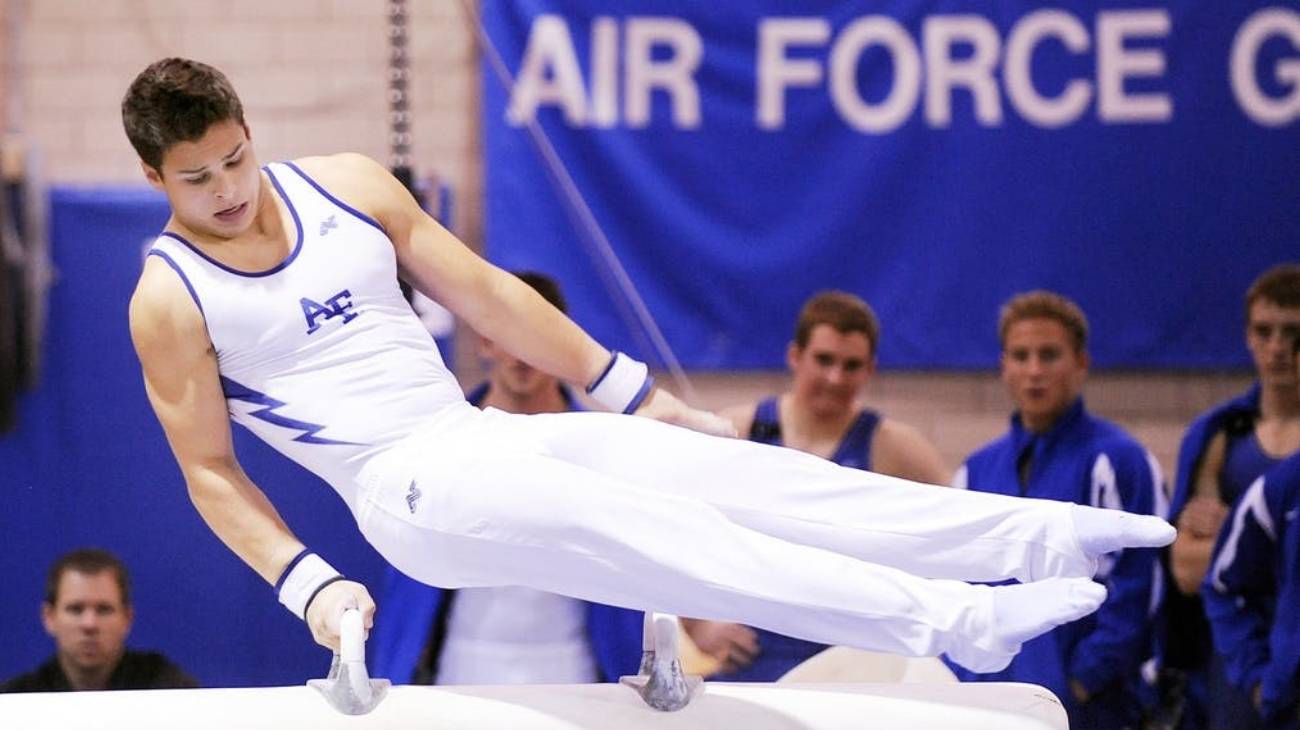A gymnast's hands support up to twice the weight of the athlete between twists, jumps and somersaults that leave half of humanity in awe, but with injuries that can be quickly addressed. In the six modalities of modern gymnastics, athletes must learn to control training and routines very well to avoid aches and pains, but when these are not well applied, serious problems occur.
Here are the most common hand and wrist injuries, and learn how to apply the PRICE therapy to alleviate the pain and prevent the injury from becoming more serious than it really is in the first instance.
What are the most common types of hand and wrist injuries when doing gymnastics?
Among the 21 bones in the hand, the phalanges are the bones most susceptible to being fractured by the demands of gymnastics. Joint pain is as much of an ailment as breathing for athletes.
In this article we will explain what are the most common injuries in the hands and wrists of a gymnast, keep in mind that we can not always prevent an injury, but knowing them always helps to avoid them.
Growth plate fracture
This is a fairly common ailment in children and young gymnasts. Growth plates are the softest and most fragile parts of the human body, and constant injury to this area affects the way the bone structure of the hands grows.
They are so weak that a moderate bump or twist can cause fractures. Especially in children when there has not been adequate training. Therefore, in children under 10 years of age or adolescents, every exercise or acrobatics should be meticulously supervised by an adult.
Scaphoid fractures
Poor technique in routines or falling and trying to stop the blow with the hands during an acrobatic stunt are the main reasons for a scaphoid fracture. The scaphoid is a small, fragile bone in each wrist, very close to the thumbs, which when injured generates swelling and pain around the finger, although often no pain is felt in this area unless there is moderate movement of the thumb and wrist itself.
Ligament tears
The wrist contains a set of muscles, ligaments and tendons whose function is to generate strength and endurance, both key qualities in gymnasts. Any of these tissues can be partially or completely torn.
These can be mild sprains that merit the application of the PRICE therapy or severe sprains that can only be treated in a medical emergency. When a tear occurs, there is local inflammation and intense pain when using the hand.
Palmar dishidrosis
Better known as hand blisters, they are created by the constant rubbing and pressure of the skin on the bars and different supports used in gymnastics. Magnesium has an anti-slip function, but causes harmful adhesion of the hands to these surfaces to the point of causing the blisters.
Although not very serious, these blisters on the hands are a nuisance to continue training, and can even bleed if you don't take the necessary rest.
Phalangeal fractures
Of the bones in the hand, the phalanges are the weakest. Poor pressing technique, falls and extreme twisting during gymnastic acrobatics lead to unwanted fractures. Another reason is a bone abnormality in one of the fingers, which causes the force to be unevenly distributed. A fracture is easily confused with sprains, so there should be a thorough examination before any treatment is applied.
Hand cramps
Muscle exhaustion from intense gymnastics training sessions is the most common cause of spasms, which are first noticed in the thumbs before you see the rest of the hand shake. Watch out for minor cramps, feelings of tiredness and weakness, numbness and stiffness. These bad symptoms are temporary and transient, but if they are constant, they should be checked by a specialist as a nerve may be involved.
Best products for the recovery of hand and wrist injuries in gymnastics
Bestseller
-
2 Mittens: Microwave Arthritis Gloves (Hearts)
£24,95 -
2 Mittens: Microwave Arthritis Gloves (Oxford)
£24,95 -
Foot Massage Roller for Plantar Fasciitis (Black)
£20,95 -
Foot Massage Roller for Plantar Fasciitis (Green)
£20,95 -
Foot Massage Roller for Plantar Fasciitis (Pink)
£20,95 -
Microwaveable Wheat Bag for Pain Relief (Hearts)
£20,95 -
Microwaveable Wheat Bag for Pain Relief (Oxford)
£20,95 -
Microwaveable Wheat Bag for Pain Relief (Sport)
£20,95
How to apply the RICE therapy to treat wrist and hand injuries in sports gymnastics?
Its use is only recommended for minor injuries, such as sprains and grade I sprains. RICE is an initial approach method for sports injuries, nowadays this therapy has become PRICE and is more effective in the world of gymnastics.
- Protection: With the support of a functional bandage or splint, we must keep the injured hand protected while we evaluate in depth what the injury is. It is recommended that the gymnast be in a quiet area, where he/she does not need to move the hand.
- Rest: This is a partial immobilisation of the hand, because it is not advisable for the muscles to be 100% immobile. Recovery begins when the injured tissues gradually begin to relax. This rest should last for 48 to 72 hours.
- Ice: It should be applied to the injured hand, but not directly, but rather with the help of a handkerchief or a thermal bag. The exposure of the ice on the skin must be intermittent, under no circumstances can the cold last more than 20 minutes, then there must be an obligatory pause.
- Compression: An elastic bandage is important in the use of gentle pressure on the hand, always taking care not to cut off the blood circulation at all. We will know if a bandage is too tight because we feel a tingling sensation in the hand, then it is recommended to loosen the compression.
- Elevation: Either immediately or at home, the hand should be placed above the level of the heart. This will help to lower the blood supply to the hand and reduce swelling. Pain and bruising will also subside, always with the support of medication when prescribed by a sports physician.
References
- Webb, B. G., & Rettig, L. A. (2008). Gymnastic wrist injuries. Current sports medicine reports, 7(5), 289-295. https://journals.lww.com/acsm-csmr/Fulltext/2008/09000/Gymnastic_Wrist_Injuries.13.aspx
- Gabel, G. T. (1998). Gymnastic wrist injuries. Clinics in sports medicine, 17(3), 611-621. https://www.sciencedirect.com/science/article/abs/pii/S0278591905701046
- Benjamin, H. J., Engel, S. C., & Chudzik, D. (2017). Wrist pain in gymnasts: a review of common overuse wrist pathology in the gymnastics athlete. Current Sports Medicine Reports, 16(5), 322-329. https://journals.lww.com/acsm-csmr/fulltext/2017/09000/Wrist_Pain_in_Gymnasts___A_Review_of_Common.12.aspx
- Chang, C. Y., Shih, C., Penn, I. W., Tiu, C. M., Chang, T., & Wu, J. J. (1995). Wrist injuries in adolescent gymnasts of a Chinese opera school: radiographic survey. Radiology, 195(3), 861-864. https://pubs.rsna.org/doi/abs/10.1148/radiology.195.3.7754022
- DiFiori, J. P., Caine, D. J., & Malina, R. M. (2006). Wrist pain, distal radial physeal injury, and ulnar variance in the young gymnast. The American journal of sports medicine, 34(5), 840-849. https://journals.sagepub.com/doi/abs/10.1177/0363546505284848
- Meeusen, R., & Borms, J. (1992). Gymnastic injuries. Sports Medicine, 13, 337-356. https://link.springer.com/article/10.2165/00007256-199213050-00004
- Caine, D. J., & Nassar, L. (2005). Gymnastics injuries. Epidemiology of pediatric sports injuries: individual sports, 48, 18-58. https://www.karger.com/Article/Abstract/84282
- Garrick, J. G., & Requa, R. K. (1980). Epidemiology of women’s gymnastics injuries. The American journal of sports medicine, 8(4), 261-264. https://journals.sagepub.com/doi/abs/10.1177/036354658000800409
- Sands, W. A., Shultz, B. B., & Newman, A. P. (1993). Women’s gymnastics injuries: a 5-year study. The American journal of sports medicine, 21(2), 271-276. https://journals.sagepub.com/doi/abs/10.1177/036354659302100218
- Caine, D., Cochrane, B., Caine, C., & Zemper, E. (1989). An epidemiologic investigation of injuries affecting young competitive female gymnasts. The American journal of sports medicine, 17(6), 811-820. https://journals.sagepub.com/doi/abs/10.1177/036354658901700616

























